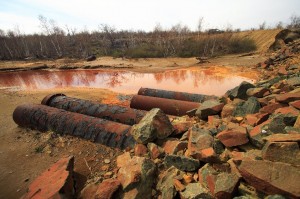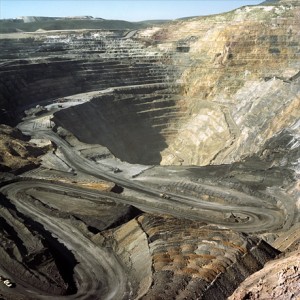 This is the first of a three part articles series on ethical issues related to the jewelery industry.
This is the first of a three part articles series on ethical issues related to the jewelery industry.
Part 2 will examine the controversial Kimberley Process, while Part 3 will present a more close up of the problems encountered in specific areas as well as point out what high street consumer can do to bring about change.
The author has co-founded a diamond jewelry business in Japan, but has relocated to Toronto, Canada, since. One problem he was facing was what to do about the ethical issues involved.
Author: Michael Werneburg, @mwerneburg, founder of Caritas
The diamond jewelry industry is in many ways a messy one, marked by ecological degradation, theft of property, disruption of social and economic order, child labour, even slavery and murder.
It is difficult to understate the environmental impact from the mining operations that produce diamonds and bullion. To produce a single gold ring, as much as twenty tons of mine waste is created. This includes not only discarded ore, but acidic water laced with toxins such as lead, arsenic, and the cyanide used to extract gold from ore.

The mines themselves are vast open pits that can measure a kilometer on a side—huge holes in the Earth that are simply abandoned once the profitable ore has been extracted. Due to the high levels of toxic minerals that litter the surface, these open pits can’t simply heal on their own.

Then there’s the human cost of producing diamond jewelry. The first people to feel the impact of a new mine are those who live in the vicinity. In virtually every corner of the world, indigenous populations have been forcibly evicted, typically without compensation. When the mining is done, the devastated landscape can’t support them as it once did.
Diamonds also become a target for criminals, warlords, and rebel groups due to the high worth of the stones, their ease of transport, and the ready market for rough diamonds. In some developing nations, these parties capitalize on weak government institutions to seize mines, enslave workers, and smuggle diamonds. In doing so, they nullify the very tax revenues that would allow the government to establish and enforce better environment protection and labour laws.
Smuggling remains a key tool for illegal profiteering from diamonds. The Republic of Congo, for instance, was placed under UN sanction in 2004 because it was exporting diamonds though it possessed no diamond mines. Smuggling of diamonds, whether to cover up the illegal source of the diamonds or simply for profit, is an inter-continental affair involving countries far removed from the world’s primary diamond sources. China, for instance, cracked down on a diamond smuggling ring only in January of 2010.
But it’s violence that is the most appalling problem in the diamond industry. Africa, long the leading source of diamonds, has a tragic history of violent diamond production. It started in Angola, where diamonds were discovered in the early 20th century.
Armed rebel groups in Angola originally waged a war of independence against Portuguese colonists. But when the Portuguese left Angola in 1975, the war didn’t end. Communist and anti-communist factions took to fighting each other. While the Communist faction controlled parts of the country that provided oil revenues, the US-backed UNITA rebels turned to diamonds as early as the late 1970’s. Funded with the hard currencies won from initial diamond sales, UNITA used force to seize control of the country’s diamond production and sold directly to international partners such as diamond industry giant DeBeers. With secured funding, UNITA was able to continue fighting for 27 years in all. When the war finally ended in 2002, some five hundred thousand people had died.
Western Africa also descended into diamond-fueled warfare, as depicted in the 2006 Leonardo DiCaprio Movie “Blood Diamond”. The story in western Africa was more complex, as diamond smugglers and armed rebel groups alike ignored international borders during the conflict. In Sierra Leone, fighting broke out in 1991, and descended into a post-Cold-War free-for-all of appalling brutality and incomprehensible complexity. Government forces and rebels both conscripted armies of children, and the rebels terrorized the civilian population by viciously dismembering and mutilating captives. In addition to the various warlords competing for territory, mercenary armies were hired, and the armed forces of other nations were drawn into the fray. When the conflict was over, fifty thousand people had died. All the while, diamonds played a direct role in allowing the war to continue: diamond mining in Sierra Leone is a relatively simple matter of digging through stream-bed deposits—diamond mining could be started by anyone who could seize a productive stretch of riverbed and round up some able-bodied laborers.
By the late 1990’s, news of the atrocities coming out of the battle grounds of Angola and western Africa could no longer be ignored. The UN began to intervene (Warning: contains disturbing images), banning trade in diamonds first from Angola in 1998, then Sierra Leone in 2000 (Warning: link contains disturbing images), and Liberia in 2001. With a UN report from Angola revealing a close correlation between diamond production and the funding of rebel armies in that country even after the sanctions, the UN called upon the diamond industry to agree upon a new system of controls to curb the traffic in conflict diamonds. This process, which came into force in 2003, became known as the Kimberley Process Certification Scheme. It was a process that had immediate impact.
—
Michael Werneburg, Twitter: @mwerneburg, is the founder of Caritas, an ethical jewelry business based in Tokyo, Japan.

